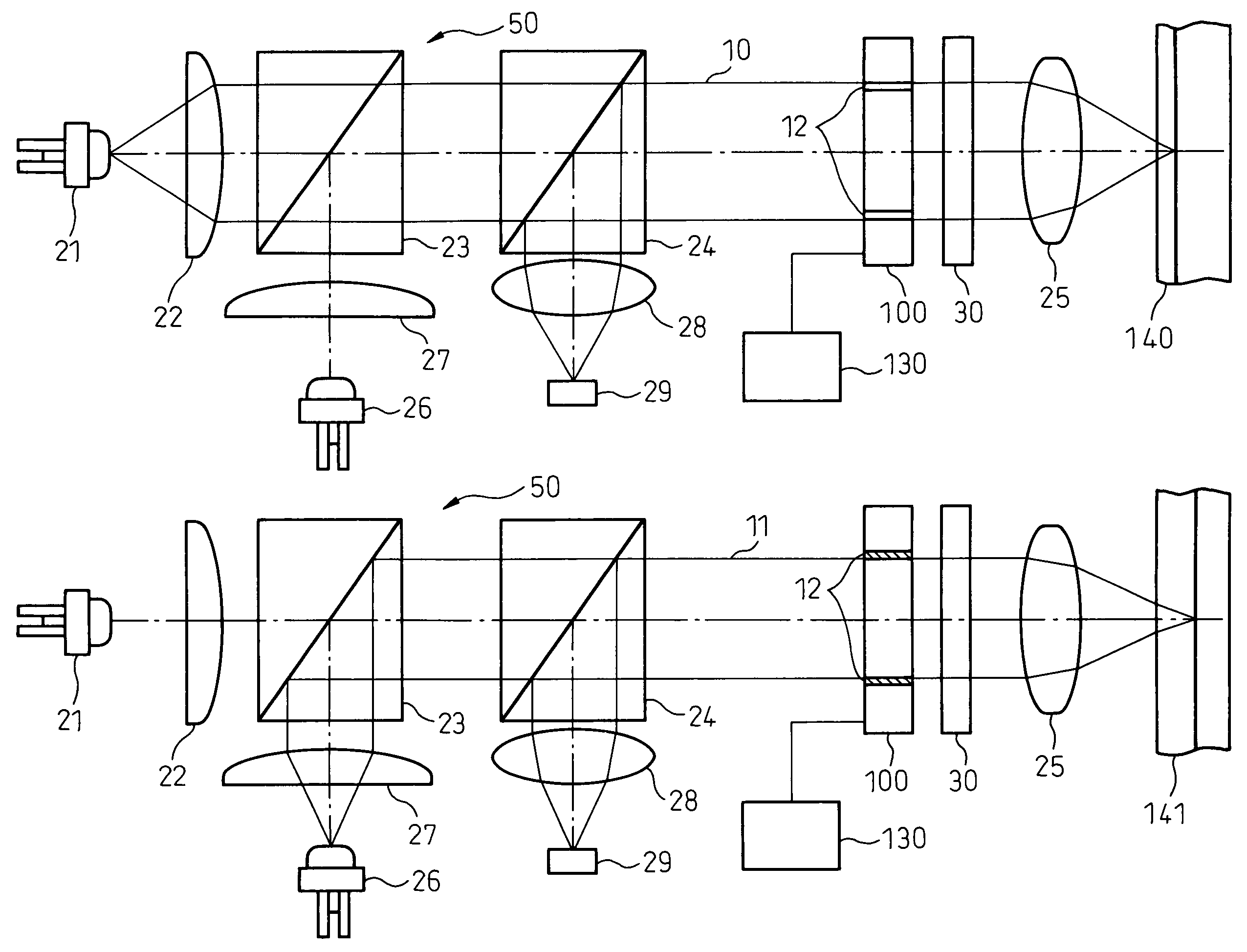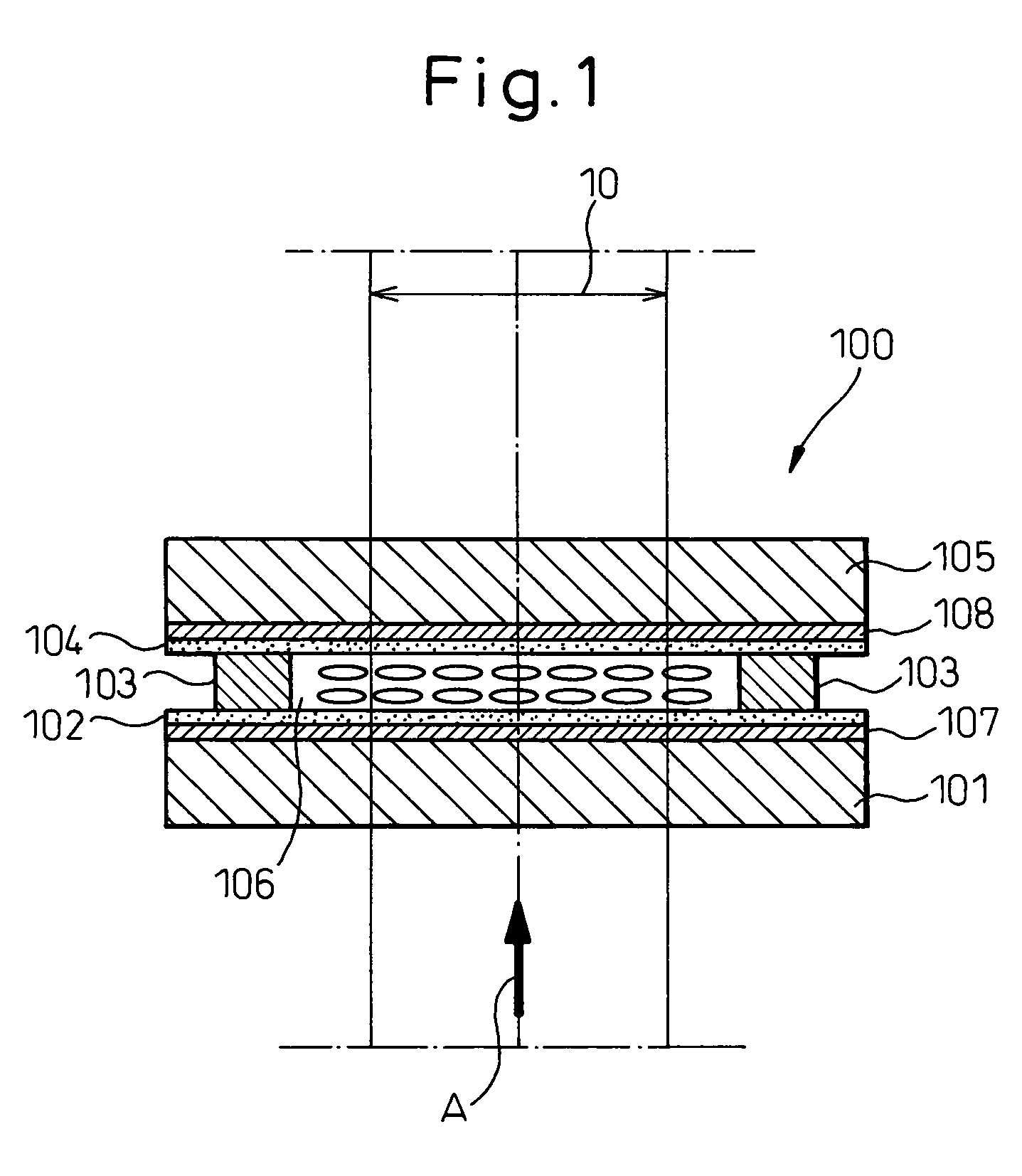Liquid crystal optical element, optical device, and aperture control method
a technology of liquid crystal optical elements and aperture control methods, applied in the direction of instruments, lenses, record information storage, etc., can solve the problems of reducing the number of light sources, increasing cost and yield, and difficult to provide for a plurality of light wavelengths, so as to accurately change the numerical aperture of the objective lens regardless
- Summary
- Abstract
- Description
- Claims
- Application Information
AI Technical Summary
Benefits of technology
Problems solved by technology
Method used
Image
Examples
Embodiment Construction
[0029]A liquid crystal optical element, an optical device, and an aperture control method according to the present invention will be described below with reference to the drawings. It should, however, be understood that the present invention is not limited to the embodiments shown in the drawings.
[0030]FIG. 1 is a diagram showing a cross-sectional view of the liquid crystal optical element 100 according to the present invention.
[0031]The direction shown by arrow A in the figure indicates the direction from which light is incident on the liquid crystal optical element 100. In FIG. 1, an alignment film 102 and a transparent electrode having a refractive index correcting transparent electrode pattern 200 to be described hereinafter are formed on a transparent substrate 101 on the light incident side. On the other hand, an alignment film 104 and a transparent counter electrode 108 are formed on a transparent substrate 105 on the opposite side. A liquid crystal 106, about 10 μm thick, is...
PUM
| Property | Measurement | Unit |
|---|---|---|
| thick | aaaaa | aaaaa |
| thick | aaaaa | aaaaa |
| RMS voltage | aaaaa | aaaaa |
Abstract
Description
Claims
Application Information
 Login to View More
Login to View More - R&D
- Intellectual Property
- Life Sciences
- Materials
- Tech Scout
- Unparalleled Data Quality
- Higher Quality Content
- 60% Fewer Hallucinations
Browse by: Latest US Patents, China's latest patents, Technical Efficacy Thesaurus, Application Domain, Technology Topic, Popular Technical Reports.
© 2025 PatSnap. All rights reserved.Legal|Privacy policy|Modern Slavery Act Transparency Statement|Sitemap|About US| Contact US: help@patsnap.com



